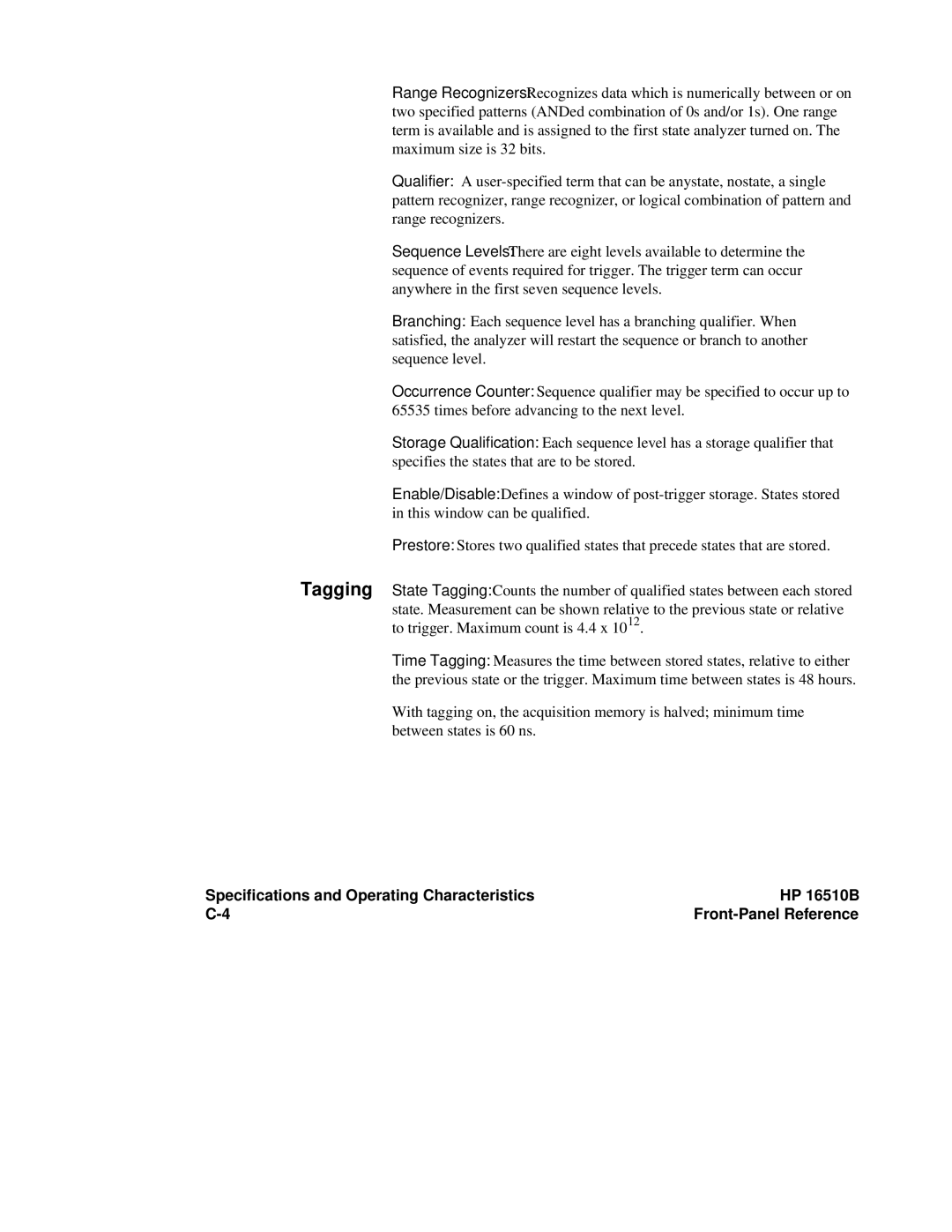Range Recognizers: Recognizes data which is numerically between or on two specified patterns (ANDed combination of 0s and/or 1s). One range term is available and is assigned to the first state analyzer turned on. The maximum size is 32 bits.
Qualifier: A
Sequence Levels: There are eight levels available to determine the sequence of events required for trigger. The trigger term can occur anywhere in the first seven sequence levels.
Branching: Each sequence level has a branching qualifier. When satisfied, the analyzer will restart the sequence or branch to another sequence level.
Occurrence Counter: Sequence qualifier may be specified to occur up to 65535 times before advancing to the next level.
Storage Qualification: Each sequence level has a storage qualifier that specifies the states that are to be stored.
Enable/Disable: Defines a window of
Prestore: Stores two qualified states that precede states that are stored.
Tagging State Tagging: Counts the number of qualified states between each stored state. Measurement can be shown relative to the previous state or relative to trigger. Maximum count is 4.4 x 1012.
Time Tagging: Measures the time between stored states, relative to either the previous state or the trigger. Maximum time between states is 48 hours.
With tagging on, the acquisition memory is halved; minimum time between states is 60 ns.
Specifications and Operating Characteristics | HP 16510B |
|
